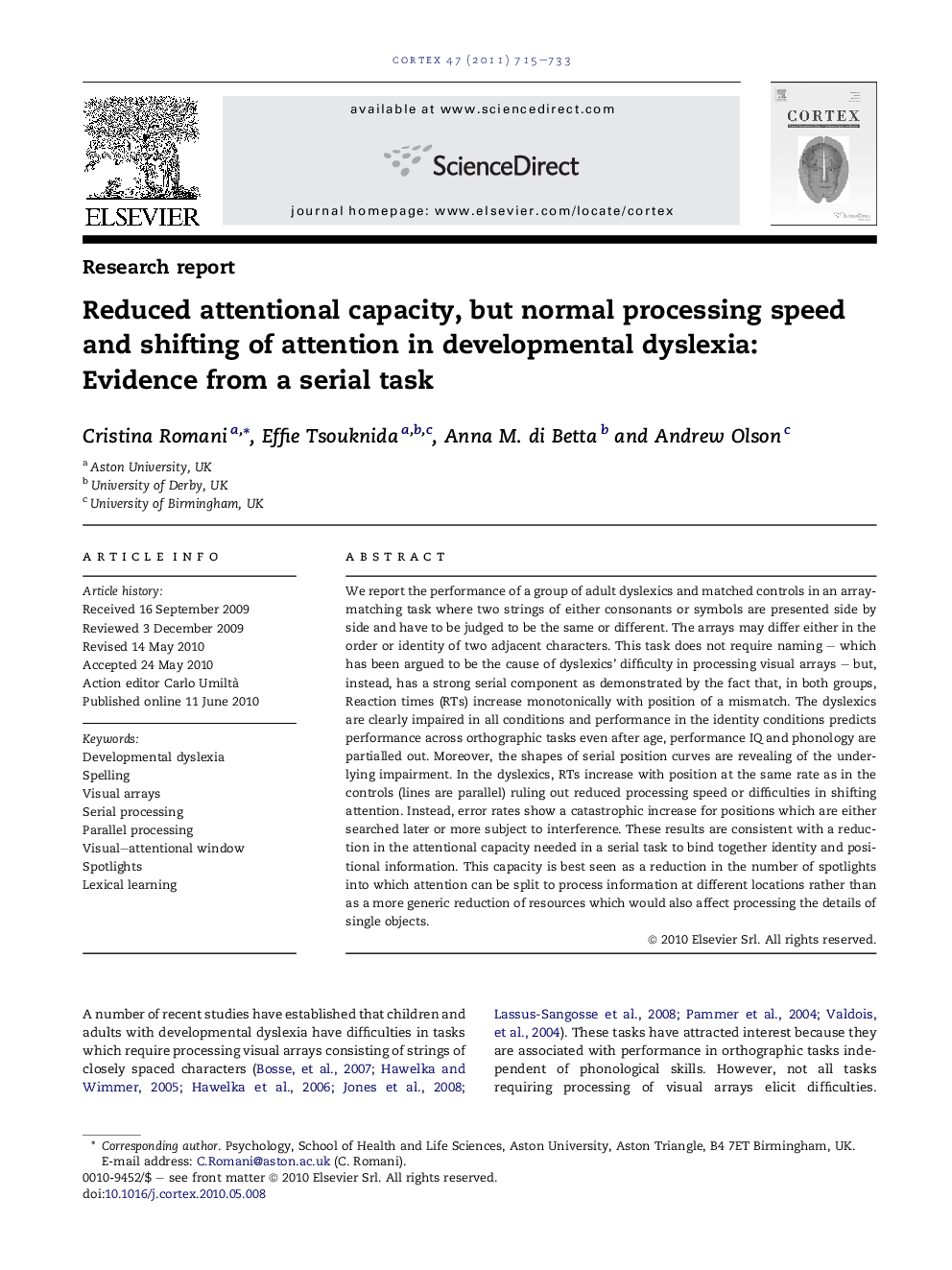| Article ID | Journal | Published Year | Pages | File Type |
|---|---|---|---|---|
| 942350 | Cortex | 2011 | 19 Pages |
We report the performance of a group of adult dyslexics and matched controls in an array-matching task where two strings of either consonants or symbols are presented side by side and have to be judged to be the same or different. The arrays may differ either in the order or identity of two adjacent characters. This task does not require naming – which has been argued to be the cause of dyslexics’ difficulty in processing visual arrays – but, instead, has a strong serial component as demonstrated by the fact that, in both groups, Reaction times (RTs) increase monotonically with position of a mismatch. The dyslexics are clearly impaired in all conditions and performance in the identity conditions predicts performance across orthographic tasks even after age, performance IQ and phonology are partialled out. Moreover, the shapes of serial position curves are revealing of the underlying impairment. In the dyslexics, RTs increase with position at the same rate as in the controls (lines are parallel) ruling out reduced processing speed or difficulties in shifting attention. Instead, error rates show a catastrophic increase for positions which are either searched later or more subject to interference. These results are consistent with a reduction in the attentional capacity needed in a serial task to bind together identity and positional information. This capacity is best seen as a reduction in the number of spotlights into which attention can be split to process information at different locations rather than as a more generic reduction of resources which would also affect processing the details of single objects.
